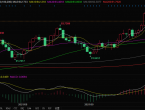EUR/USD
1.16461
0.019%
Gold
3990.74
0.094%
Oil
61.254
-0.156%
USD/JPY
152.774
-0.065%
GBP/USD
1.33361
0.014%
GBP/JPY
203.750
-0.043%
Industry sources: Airbus will delay production of some A220 aircraft in 2025 and 2026. Airbus aims to achieve its 2026 production target of 14 A220 aircraft per month by December 2026. The company plans to deliver 100 A220 jetliners in 2025.A US judge has reportedly dismissed a class-action lawsuit against Apple over its antitrust market control over iPhone apps.The Dow Jones Industrial Average closed up 337.47 points, or 0.71%, at 47,544.59 on Monday, October 27; the S&P 500 closed up 83.47 points, or 1.23%, at 6,875.16 on Monday, October 27; and the Nasdaq Composite closed up 432.59 points, or 1.86%, at 23,637.46 on Monday, October 27.German Geoscience Research Center GFZ: A 6.1 magnitude earthquake occurred in Türkiye.Fitch: North American infrastructure projects face challenges from rising costs.











